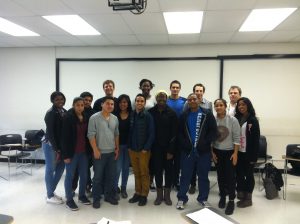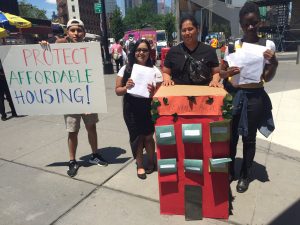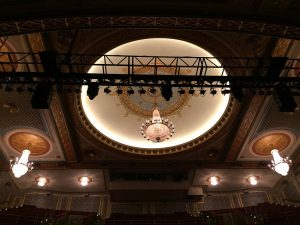Kinesthetic Classroom: Free-writing and drawing
Research in cognitive science has established that learning is enhanced by kinesthetic engagement ideas, themes, and texts. In other words, students that take notes with pen and paper, sketch what they see, and write multiple informal drafts of papers retain more information, develop strong critical thinking skills, and become more involved in the intellectual conversation.

Post-performance talk back and classroom visit by director of Nbelele’s Funeral, a play about the AIDS crisis in South Africa.
In my Play Analysis classes (Writing Intensive, Gender and Sexuality concentration) students free write on paper every day. We start each class by responding to a prompt about the day’s reading. This helps students overcome writing anxiety, establishes a system of critical thinking in the class, and frees their creative imaginations. After attending Prof. Satyanarayana’s PDAC workshop in the Spring of 2019, I adopted his tool the Learning Log in all of my classes. The log provides prompts for students to respond to lectures and gives them an easy format for note-taking. In History of the Theatre, students maintain a sketch book and produce ten sketches of theater architectures and stage designs by the end of the semester. As my mentor taught me, describing and drawing precisely what you see in an archival image is the first step in a critical analysis of material culture.
Place-based education
I take students to see the plays they are reading for class. Each semester, I rewrite the Play Analysis syllabus to include plays that are being produced in the current theater season. The majority of my students has never seen a professional production of a play and may have read only a single modern or Shakespearean play in high school. Without understanding the form as a live performance experience, they are not fully prepared to read texts written for the stage. In past semesters we have read and attended plays like Big Love (based on the Greek tragedy The Suppliants), John and Jen, Arthur Miller’s Incident at Vichy, and If Pretty Hurts Ugly is a Muhfucka. Students were imaginatively and intellectually stimulated by these performance events, and went on to give inspired readings of dramatic texts. Additionally, theatre attendance expanded their understanding of the characters, plots, themes, and poetic styles of the plays incalculably.
Each semester of History of the Theatre, we do a backstage tour of active theaters in NYC–from Broadway to Brooklyn. We have gone backstage and onstage Broadway theaters such as the Richard Rodgers and the Samuel Friedman. These theaters are a century old, and so we contextualize our visits with readings of the development of the Broadway musical in the early 20th century. We have also visited converted spaces, such as St. Ann’s Warehouse (an 18th-century tobacco factory), and architectural gems such as the Signature Theater (designed by Frank Gehry). Students take notes and sketch elements of the architectures during tours with the theater managers, and use these to compose low-stakes blog entries on Blackboard or OpenLab.
The Learning Places course is, of course, based on place-based pedagogy. The culminating project of the semester is a performance intervention. Students choose an urban location where a specific environmental, economic, or human rights issue needs addressing. Students identify the connection between the local man-made objects, technologies, and activities that threaten the quality of human life and/or the natural world. Next students will compose a research question that will reveal information about the physical elements of the site and generate data related to inequalities and dangers. Finally, using the archive of current and historic strategies and interventions for inspiration, students will create and participate in a live, public performance event that takes place at the site of investigation.

Students engage with the residential community around the Barclay’s Center on issues of affordable housing.
Digital Place-Based Education
Digital mapping has been at the center of much of my curriculum development and pedagogy research efforts over the past three years. Using research conducted by students in multiple sections of Theatre History, I developed and published a historical map of New York City Theater that extends back to the colonial period. The University of Minnesota’s OER site Theater Historiography has already agreed to publish the tool for use by educators across the globe. My fellowship on the NEH grant “Cultural History of Digital Technology” supported the development of this tool. I continue to teach a module on digital mapping in my ID courses to teach research methodologies and to help students explore topics in a spatio-temporal way. With Ting Chin (Architecture Technology), I wrote a paper on the use of digital mapping in an interdisciplinary course. The paper will be published in a collection on digital interdisciplinarity next year. Finally, I recently submitted a $50,000 NEH grant proposal to support the development of interdisciplinary curricula that uses GIS technology for courses in computer science, architecture technology, information science, English, and mathematics.



